Electric lighters requires no fuel and can stand up to a stiff wind, but some perform better than others

From left: flexible wand, pocket, and stick styles of plasma lighters.
By Michael Frank
Plasma lighters can get a cookstove or a candle going just like a traditional lighter, but that’s about where the similarities end. For starters, rather than running on a flammable fuel, such as butane, you charge them by plugging them into a USB. The models I reviewed took less than an hour to charge, though I didn’t evaluate how long the charge lasts. A general rule for most plasma lighters is you can expect to light at least 100 candles before you need to recharge the device.
They also make heat energy very differently from traditional lighters. In simplest terms, the difference in charge between positive and negative electrodes in these lighters creates an arc of plasma, or ionized gas, that’s hot enough to ignite candle wicks, paper, and other flammable materials. (Some plasma lighters have multiple poles and create up to three plasma arcs, but more arcs didn’t count for diddly in my experience.)
There is another critical (and perhaps more important) difference between plasma and traditional lighters. Flammable fuel lighters create a flame that can reach an inch or so high. With plasma lighters, the plasma arc forms across poles that are placed just a few millimeters apart. There is no flame, so whatever you want to light must come extremely close to the lighter itself and in direct contact with the plasma arc. That means lighting things like votive candles can be tricky with some models because either the lid or metal housing for the poles makes it difficult—or impossible—to navigate the plasma arc into tight spaces.
There are upsides to these tools, however. No matter which one I tried on multiple, very gusty evenings on my back patio, not one proved to be even slightly sensitive to wind. Held directly in front of a very powerful fan, again, these just don’t flinch.
Also, while you can certainly burn yourself if you stick a finger between those poles (in true gonzo journalism tradition, I of course had to try this), a plasma lighter isn’t nearly as dangerous to have in your house as a traditional one: There’s no fuel to spill, and some have safety mechanisms that you may find appealing if you have small kids in your home. Plus, there’s none of the mess of butane, or the waste of a disposable lighter. (Though, alas, the battery inside will die at some point.)
But there are distinct negatives, too. If your goal is to have one to take on overnight backpacking trips, for instance, you might prefer a pocket lighter style, but there was only one I tried that would be adequate for lighting a camp stove. Also, if you’re heading out on a weeklong trip, you’ll need to think of where you’re going to recharge your lighter. Sure, you could bring a USB battery with you, but that’s just more stuff to hump down the trail.
My best advice is to think about what you most frequently need a lighter for and to consider the pros and cons I’ve listed. All the models I evaluated are very affordable, but there’s no use buying one if it won’t suit your needs and just ends up rotting in your junk drawer.
Editor's Choice: iLevar Dual Arc Lighter
Versatile, user-friendly, and our all-around favorite
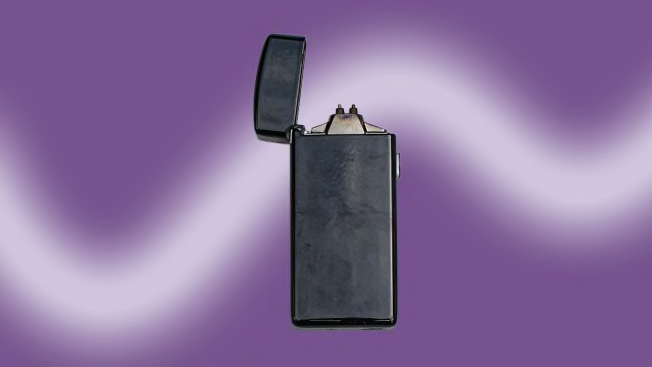
Photo: Michael Frank
Price: $17
Where to buy: Amazon, iLevar
Crack the lid on the iLevar and a string of lights on the thumb side of the housing glows in neon blue. It’s not subtle, but this is still my favorite pocket lighter of the bunch because those LEDs tell you the charge state. If you were camping in the dark, you could easily see the ignition switch because it glows like an aurora. It also has a lid that moves entirely out of the way, so it’s easy to insert into a votive.
The iLevar has a timeout function that requires you to close and reopen the cap if it has been left open for a brief period. That can get a little annoying but might also make it safer if children are around and you happen to leave the lighter laying open.
As with all pocket-style lighters I tried, however, it’s dangerous to use one of these to light a gas or propane flame, because you have to get the plasma beam directly in the path of that gas, and could get burned.
Bends to Your Will: Zippo Candle Lighter
Flexible and seemingly child-safe
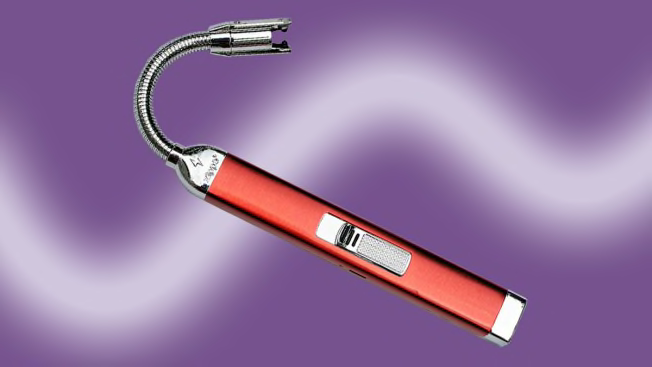
Photo: Michael Frank
Price: $27
Where to buy: Amazon, Zippo
There are a few reasons to really dig this tool. First, it has a two-stage ignition mechanism, like many butane wands: You have to first click a button on the rear of the lighter body and then push upward on a spring-loaded trigger. An infant wouldn’t have the dexterity to accidentally fire up this Zippo, which is probably the most childproof of all the wands.
However, because the mechanism is spring-loaded, it’s a bit tiring to operate. You’re constantly fighting back against the tension, so if you’re lighting a bunch of kids’ sparklers on July Fourth or candles on a birthday cake, the chore becomes a bit more onerous. You’ll manage, but it will just be more of a challenge than with the other wand models here.
It also has the longest body of all the wand styles I checked out, and that meant I could light my stovetop, gas grill, and camp stove at a safe distance. The flexible extension style also allows you to hold the wand at a comfortable arm angle but still reach the head into an enclosed space, like the mouth of a small votive. For really tight spaces, however, like some tea light candelabras, the metal ends on the sides of the plasma beam can get in the way. If you’re trying to light something like that, both the Power Practical and Reidea have exposed heads that are just better.
A Versatile Choice: Power Practical Sparkr Wick
Handy and comfortable to hold
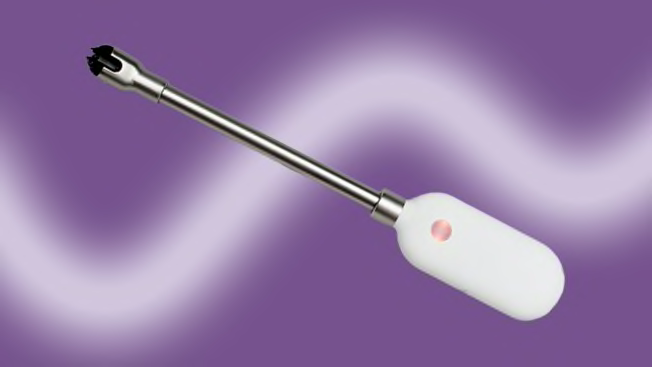
Photo: Michael Frank
Price: $20
Where to buy: Amazon
The Sparkr Wick is made with a childproof design, without the fatiguing annoyance of the Zippo wand. Hit the only button on the lighter body three times in a row and it glows to indicate it’s on.
From there just press and hold the button to light the twin plasma arcs. The tip is also entirely exposed for easier access to tight spaces, and the friendly shape is kind to your palm. I had no issues igniting the stovetops, fireworks, or charcoal chimney.
Downsides? It doesn’t have a flexible extension, so if you’re reaching down into a candle holder, you need to dip the tip of the lighter down toward the wick in a sort of dunking action. It’s not difficult, but it takes a beat before you rock the rhythm.
Practical and Retractable: Reidea Electronic Candle Lighter
For happy campers
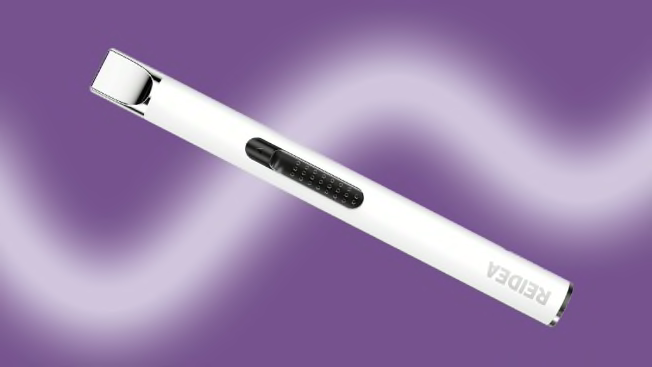
Photo: Reidea
Price: $13
Where to buy: Amazon
This lighter merges some of the advantages of the Zippo candle lighter with some of the disadvantages of that design. First, it has an on/off switch at the base, where you plug in the USB. That’s good, because the switch is tiny and discreet. The average toddler probably won’t spy this control. Second, a spring-loaded thumb lever takes a bit of hand strength to extend the poles of the plasma beam from the lighter body. Turn the lighter on and the base glows, illuminated by a blue LED. Then push the spring upward to expose the single poles of the plasma beam and it ignites.
Here, though, the Reidea can be a bit of a pain to use because that spring strength is a little too robust, and because this lighter doesn’t feature a flexible extension, so if you’re reaching down into the mouth of a votive or up to the tapers on a candelabra, you may struggle after a time to keep fighting that spring. If you have just got a few candles to light, it’s no sweat. But it’s more sweat the more times you have to repeat the process.
Like the Power Practical, the exposed poles of this lighter make it easier to stuff into tight confines, but the combination of a round body that’s a little slippery and that very robust spring mechanism means I didn’t want to operate this lighter for very long. That said, it’s reasonably childproof. And if you were looking for a compromise for campsite use, it makes sense because it’s smaller than the longer wand styles I evaluated and its poles retract, making them unlikely to get damaged if you cram this lighter into the side pocket of a backpack.
Other Plasma Lighters We Evaluated
LcFun Waterproof Outdoor Dual Arc Lighter
All posture, no muster
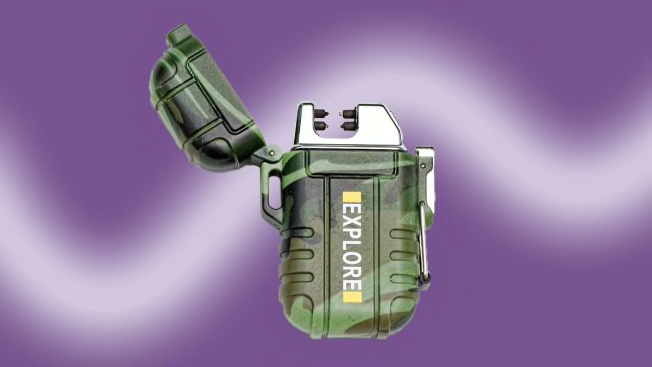
Photo: Michael Frank
Price: $15
Where to buy: Amazon
With its rugged-looking camo case you’d guess this model would have the heft to match its cosmetics, but it doesn’t. The plastic on the exterior feels cheap and flimsy, and also slippery, so it’s decidedly all posture and no muster. Plus, popping the spring-loaded lid and then hitting the plasma trigger is a hand-cramping procedure.
And it’s just downhill from there. Yes, the cap does swing entirely away from the lighter body, and yep, there are two, rather than a single plasma beam. But the poles are arrayed vertically rather than forming an open crown at the top of the lighter, so while I could wedge the LcFun down into a votive (or, a lot more easily, extract a candle from its container and light the wick), the process was awkward.
Lighting a stove was even more challenging, and also dangerous, because it’s that much harder to get the poles close to the gas emission (much the same beef I have with the Zippo insert and Tesla). It did light a sparkler and other fireworks as well as paper for the grill chimney without any problem, but this model has more cons than pros.
Ronxs Lighter
A serviceable option, but there are better choices

Photo: Michael Frank
Price: $10
Where to buy: Amazon, Walmart
The head end of the Ronxs is almost identical in shape and structure to the Zippo candle model’s architecture. That brings positives and negatives to the party. Yes, the flexible wand style design lets you reach into a votive or sideways into a gas grill to fire a pilot light with your hand at a safe distance, but like the Zippo, all that metal around the poles can get in the way if you’re trying to insert the lighter into a very narrow space.
Compared with the Zippo candle igniter, however, the simple on/off switch and non-spring-loaded ignition are easier to operate and cause no fatigue. But many children will also know what an on button does, and because there’s no dexterity burden here, the Ronxs might not be a device you’d want to have in your home if little kids are around. I also found the balance a little off here, with the flexible arm end of the lighter outweighing the handle, making the plasma end want to fall forward. For lighting a candelabra, that might be more challenging than with the better balanced stick or wand styles like the Suprus or Power Practical.
Suprus Lighter
Sleek, but not the right lighter for tighter spaces
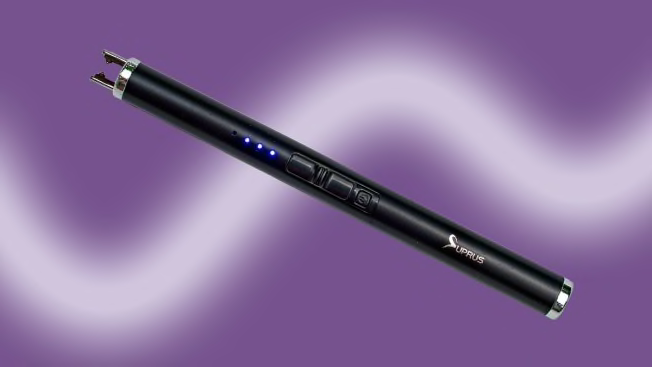
Photo: Michael Frank
Price: $10
Where to buy: Amazon
The length of this stick-style lighter does let you reach more easily into votives and keep your hand at a decent distance from a gas range or when lighting a camp stove. Also, there’s a battery level indicator and the controls are pretty obvious: Slide the thumb lever up to expose the two poles and push down on a small ignition switch. My model was black, but I’d recommend going with another of the available colors because it can be hard to see the controls otherwise. Also, while this is a reasonably handy model, a clever child might figure out how to turn it on, which you may want to keep in mind if you have small children at home.
As with the Zippo candle lighter and the Ronxs, the metal architecture around the poles can get in the way of reaching into some votives.
Tesla Coil
Has heft, but not much more
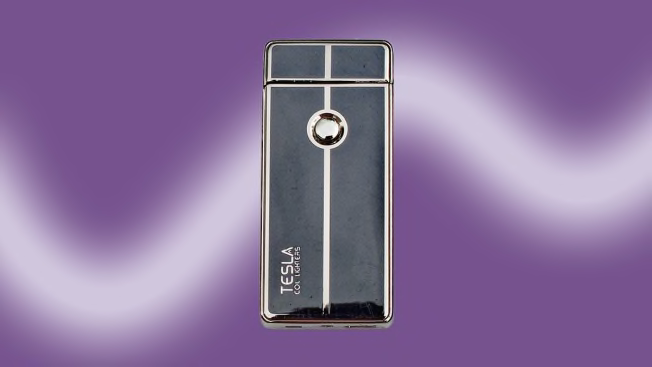
Photo: Michael Frank
Price: $17
Where to buy: Amazon
There’s a decent heft to this model, but I can’t see a single other upside to this lighter, largely because the cap always seems to be in the way. You can’t comfortably invert it and insert it into a votive, and that cap also keeps it from getting near a stovetop without removing a grate.
The single plasma beam is adequate for lighting something like a sparkler or paper for a chimney grill starter, but the cap and metal behind each pole get in the way of reaching into tight locations.
Zippo Arc Lighter Insert
A Zippo that has zippo to recommend it
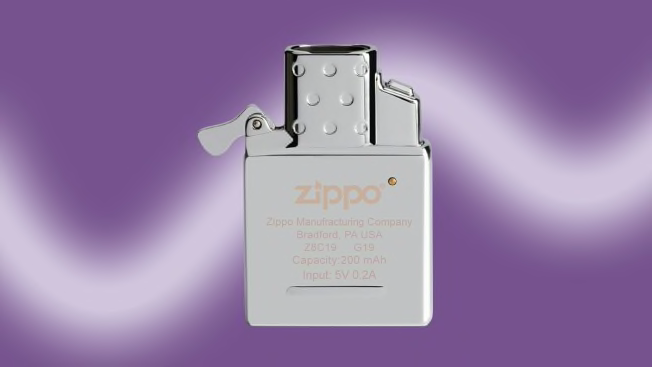
Photo: Zippo
Price: $19
Where to buy: Amazon, Zippo
If you find yourself nostalgic for the wonders of the old-school Zippo lighter that supposedly powered American GIs through World War II, then buy this Chinese-made insert that slips into the case of a classic Zippo body. Or don’t.
Why so sour? Well, the original Zippo was actually made in Bradford, Pa., not in China, and lighting it meant rolling a knurled thumb-wheel against a flint to create a spark. This replacement insert has a very tiny button to replace that, and, much like the LcFun, the ergonomics are just too cramped for easy use. Advantages? Sure, there are some. I could readily get a wick inserted between the dual plasma arcs to light a candle, but, as with other pocket designs, the cap itself prevents easily pushing the beam into a confined area. So with votives, you have to pull the wick out to get them going. Only freestanding tapers were easy to light.
You can write the rest: The Zippo also wasn’t easy to get close to the emissions of a range or camp stove without risk of getting burned when the gas ignited. Lighting fireworks and the newspaper for the charcoal grill wasn’t a hassle. Sure, compared with a standard Zippo this one doesn’t smell and can’t leak, but I still prefer the original.
The Process: How I Evaluated These Plasma Lighters
I used all these lighters exactly the same way. I used them to light votive-style candles, both fresh and previously burned. (Only some of the lighters I evaluated were able to light votive-style candles that had burned down somewhat, because of the increased distance between the lighter and the wick.) I also used them to light our home gas range and learned that wand- or stick-style lighters were best for this job because your hand is not close to the gas when it ignites.
Outside, I also lit a backpacking canister stove that runs on pressurized propane, and my wife and I each evaluated the lighters on some home fireworks, like sparklers, as well as using them to ignite newspaper stuffed inside a chimney starter I use to fire up our charcoal grill. For all these evaluations (save the kitchen stove and the votives), we were dealing with very windy weather but relatively low humidity. As noted in the introduction, we also held each lighter directly in front of a high-powered fan.
This product evaluation is part of Consumer Reports’ Outside the Labs reviews program, which is separate from our laboratory testing and ratings. Our Outside the Labs reviews are performed at home and in other native settings by individuals, including our journalists, with deep subject matter experience or knowledge and are designed to offer another important perspective for consumers as they shop. While the products or services mentioned in this article might not currently be in CR’s ratings, they could eventually be tested in our laboratories and rated according to an objective, scientific protocol.
Like all CR evaluations of products and services, our Outside the Labs reviews are independent and free from advertising. If you’d like to learn more about the criteria for our lab testing, please go to CR’s Research & Testing page.
When you shop through retailer links on our site, we may earn affiliate commissions. 100 percent of the fees we collect are used to support our nonprofit mission. Learn more.
Consumer Reports is an independent, nonprofit organization that works side by side with consumers to create a fairer, safer, and healthier world. CR does not endorse products or services, and does not accept advertising. Copyright © 2022, Consumer Reports, Inc.

